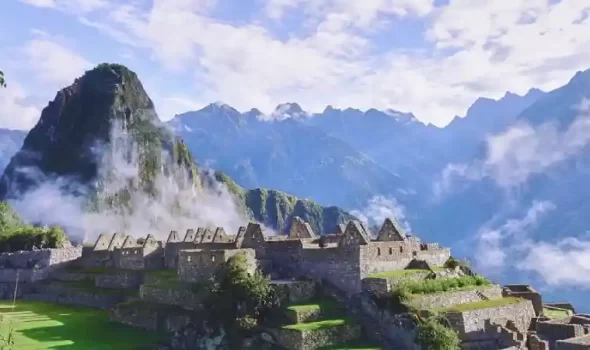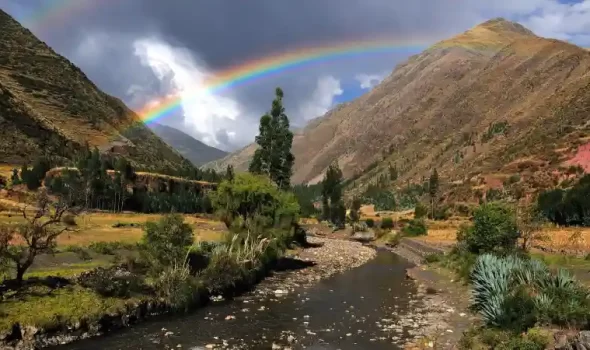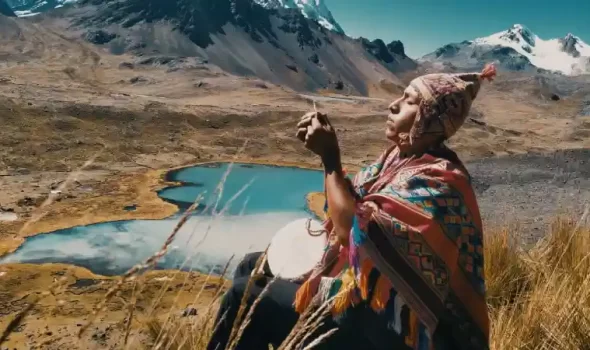What was Sacsayhuaman? temple, fortress or an administrative center? For many years, the functions that this cyclopean construction could have fulfilled have been debated. Some authors attribute to Sacsayhuaman a non-human origin due to the gigantic stones (up to 125 tons) perfectly fitted together with a millimetric precision that leaves no one indifferent.
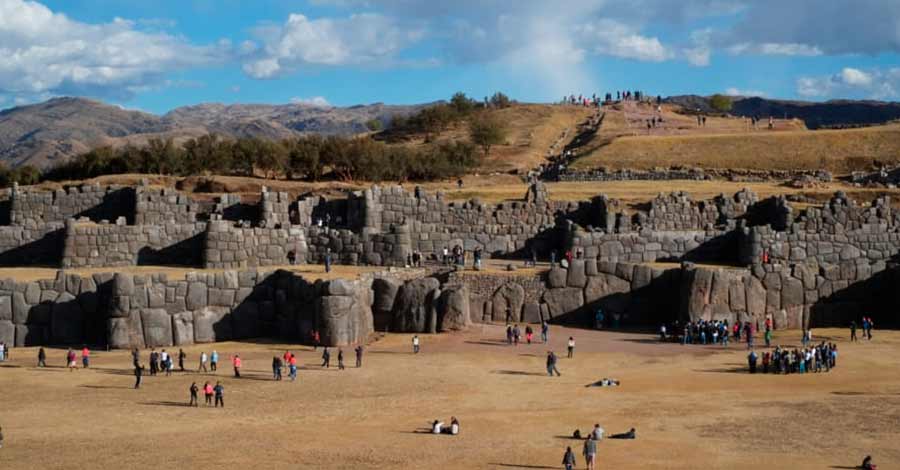
What was the real function of Sacsayhuaman? Let’s find out this and much more by delving into its history from local accounts, chronicles and the most recent documentary sources. But first, let’s look at some general aspects about the most imposing and closest construction to the city of Cusco.
Location and altitude of Sacsayhuaman
Sacsayhuaman is located on a high hill to the north of the city, it seems to be guarding the Inca capital. The so-called “fortress” is higher than the city, the Inca complex is at 3610 m.a.s.l. It can be seen with the naked eye from the entire center area of Cusco, obviously from a point that allows the visualization of that mountain.
Meaning or etymology of Sacsayhuaman
According to the Cusquenian historian Victor Angles Vargas, “Sacsayhuaman” comes from “sacsay” which means to be satiated or to get fed up, and from “waman” which is a falcon. According to this author, the falcon was the tutelary bird of Manco Capac, the first Inca. Sacsayhuaman can be translated as a marbled or festooned falcon.
Others, like Dr. Uriel Garcia, affirm that the correct name was “Saccsa-Uma”. Uma in the Quechua language means head and saccsa is marbled and pointed corn that would refer to the stones integrated into the construction alluding to the type of corn of that name. In this context, Sacsayhuaman could be understood as a “fortified head” according to Uriel Garcia.
The head is closely related to what the chronicles report, that the city is shaped like a feline, perhaps a puma or an Andean cat. Sarmiento de Gamboa reports in his chronicle that the head of this feline was Sacsayhuaman. Curiously enough, Sacsayhuaman is built right on the head of a puma, since the city of Cusco is curiously shaped like a puma. Therefore, Sacsayhuaman has great importance and sacred nature.
History of Sacsayhuaman
Pre-Inca and Inca times:
According to Jose Gabriel Cossio, an illustrious historian from Cusco, Sacsayhuaman and many other Inca sites correspond to places that were used since pre-Inca times, then the Incas would arrive and build their architecture. Garcilazo de la Vega mentions that Pachacutec, after giving the city the shape of a puma, began construction on what would be the head of that feline. Then the work would be continued by Tupac Yupanqui and concluded by Huayna Capac, the successor of Tupac Yupanqui.
When we say concluded we refer to the remains of the original construction, because, upon the arrival of Spaniards to Cusco in 1534, the construction had not yet been completed and many stones were dismantled and transported for the construction of colonial buildings such as the Cathedral of Cusco.
According to Garcilazo de la Vega, the construction was in charge of four master builders, who succeeded each other: Huallpa Rimachi, Inca Maricanchi, Acahuana Inca and Callacunchuy. Another chronicler, Cieza de Leon, wrote that Tupac Yupanqui ordered to bring 20 thousand men from the provinces to be employed in the construction. The chronicler also implies that the work relied on many specialists who fulfilled their work exemplarily.
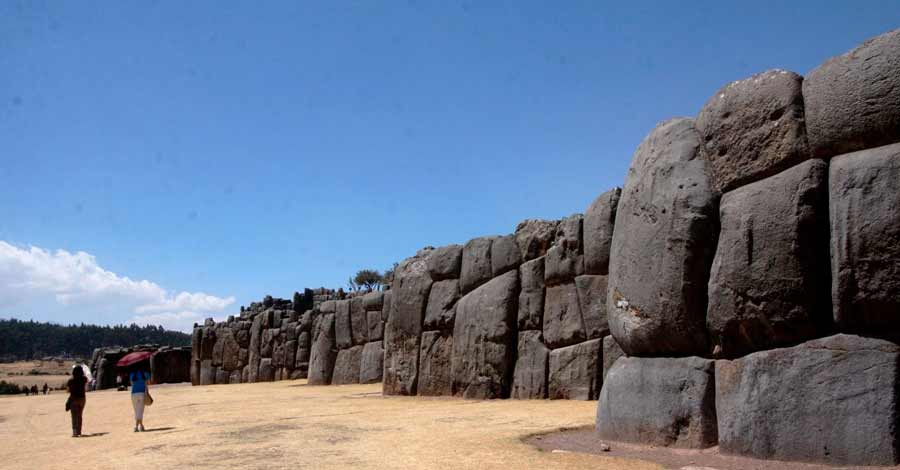
Upon the arrival of Spaniards:
Upon the arrival of Spaniards in 1534, Garcilazo de la Vega explains that Spaniards called the place a “fortress” because of the existence of bastions, food deposits, and its colossal location. But local people knew that this Inca complex was the Royal House of the Sun. When Spaniards took the city of Cusco and committed multiple crimes relegating and using as a facade of power to Manco Inca (brother of Huascar and Atahuallpa Incas), Sacsayhuaman served as a prison for this Inca after he attempted to escape from the city in search of starting a rebellion to expel Spaniards.
After succeeding in escaping, Manco Inca would lead a war against Spaniards from Calca in 1526, they would take Sacsayhuaman that was being guarded by cañaris faithful to the Hispanic cause. From the imposing Inca site, Manco Inca forces would initiate the siege of Cusco.
The Incas almost achieved their goal. However, through a risky onslaught, Spaniards and their allies would unleash a bloody battle in Sacsayhuaman that would end with the death of thousands of natives who fought among themselves, some against and others in favor of Spaniards. The most outstanding death was that of an Inca captain popularly known as “Cahuide” (whose real name would have been Cullash).
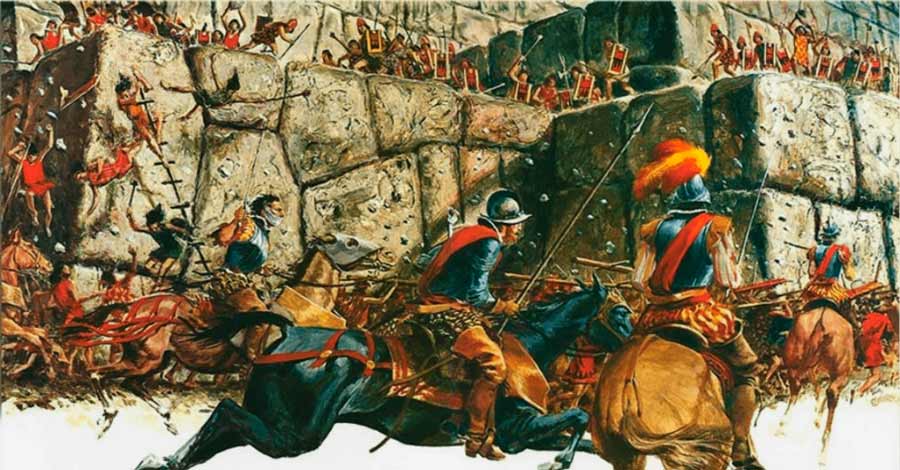
Days after the battle, due to the thousands of dead bodies distributed in Sacsayhuaman, flocks of condors would gather in the place to dispute the corpses. This fact would serve as inspiration for the colonial shield of the old Cusco, where these condors would be represented in remembrance of how Spaniards won that battle and the Cusco city.
Is Sacsayhuaman a Fortress, temple or administrative center?
We have mentioned that upon the arrival of Spaniards, the whole complex was called a “fortress” according to western precepts of such a construction, three gigantic zigzagging walls that only fit as a fortress in the European logic of that time. However, some chroniclers investigated more about Sacsayhuaman and discovered that it was more than just a military “fortress”. They found multiple sections that did not fit the idea of a military fortress, but rather a sacred space dedicated mainly to the sun.
Garcilazo de la Vega, Cieza de León, Martín de Murua, and others called it “Royal House of the Sun”, that is to say, a ceremonial and religious center where it is said that thousands of people gathered to officiate religious ceremonies. The place would later serve temporarily as a “fortress” during Manco Inca’s uprising against Spaniards.
Site built by civilizations before the Incas or non-human civilizations?
According to historian Clements Markham, there is no construction in the world that can be compared to Sacsayhuaman. Hiram Bingham was so amazed at this construction that he mentioned it could only have been built by giants. Curiously, many people consider that Sacsayhuaman was built by extraterrestrials.
In ancient times there were also people who fancied these theories. Garcilazo de la Vega wrote that there were Spaniards who did not believe that this colossal construction had been made by men and believed that it had been made through enchantments and demons. Some Andean legends even mention that Sacsayhuaman was built by the Wiracochas, supernatural beings present in Andean mythology since ancient times.
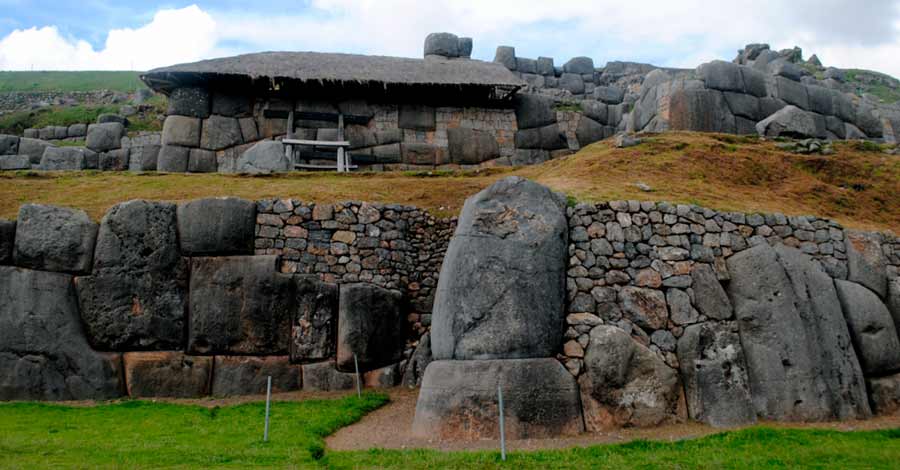
The irregularity in the shape of the stones that still fit perfectly together is one of the most striking aspects, however, Sacsayhuaman is not the only megalithic construction in Cusco. Although it is the most imposing, the Incas left multiple sites with gigantic constructions where the rocks used to fit perfectly together.
Modern Theories
Since the 1950s, many archaeologists and researchers have discovered vestiges of possible systems used for the construction of the site. The Incas would have used different systems of ropes and levers to transport the heavy rocks from distant quarries.
These theories about the construction of Sacsayhuaman are based on strength and ingenuity and not on otherworldly architects. But while these theories explain how the regular-sized rocks, as well as the small ones, could have been assembled, there is still no convincing explanation as to how the gigantic boulders weighing an average of 100 tons were placed, aligned and assembled.
The chronicles tell that not even Spaniards themselves were able to move these gigantic rocks upon their arrival; taking only those they could move to use them in constructions such as the cathedral of Cusco. These facts lead to suppose that the biggest rocks were already there when the first Incas arrived to the Cusco valley, they would have only followed the architectural pattern and continued the construction.
Architecture of Sacsayhuaman
The first platform that faces the esplanade of Sacsayhuaman is built by gigantic blocks of stone, one of which reaches 9 meters high by 5 meters wide and 4 meters thick, the calculated weight is 125 tons, the heaviest according to official data. Although these gigantic rocks are the most striking of the site, there are other areas that fulfilled certain functions and even today it is known that there were towers that gave the place a greater imposing appearance. Let us quickly review some sectors of the site:
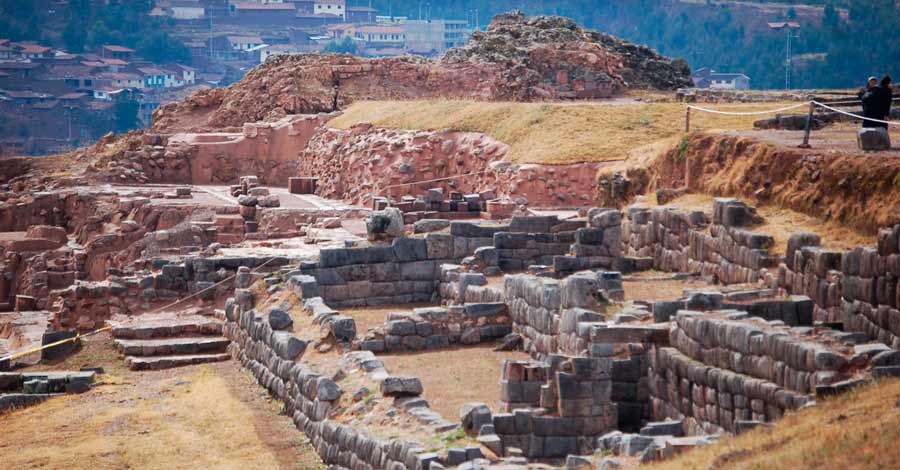
The group of enclosures:
Located at the top of the hill in the so-called “religious sector”. These are beautiful enclosures leaning against the hill with beautiful views of the city.
The bastions:
Comprising the three levels of imposing rocks in a zigzagging shape. Many times the number three is associated with the Hanan Pacha, the Kay Pacha and the Uqu Pacha (the Andean cosmovision for some people). Others associate it with the Inca god Illapa and its two manifestations: the muchuy and the muchuy mikhuy.
The first is associated with famine, hail and the destruction of neighborhoods, and the second is associated with rain and good harvests, both would be the first and second walls respectively. According to this theory of Dr. Luis Barreda Murillo, the third would be a support or retaining wall.
The doorways:
Jorge Escobar mentions that with chronistic information and modern sources it is known that Sacsayhuaman had up to 36 doorways. Today there are only 18. Garcilazo de la Vega mentions three doorways. that were probably the most important: Tiu Punku, Acahuana Punku and Viracocha Punku, these doorways. apparently are lined with solar cycles at the solstices and equinoxes.
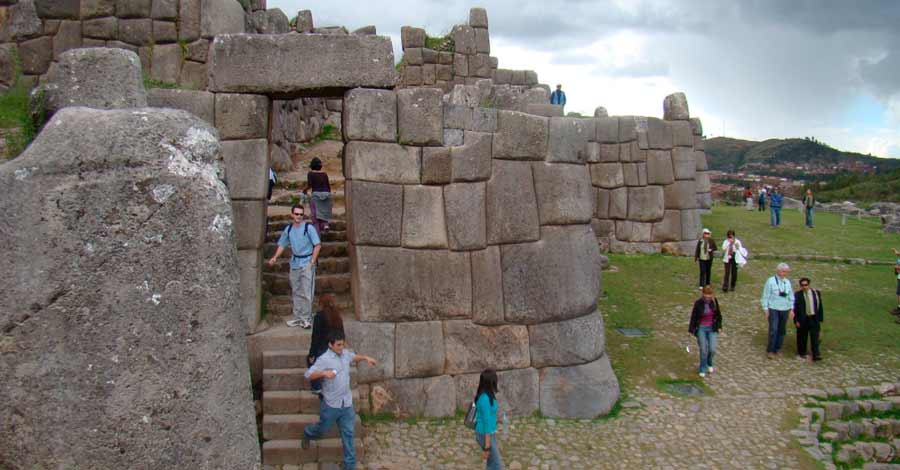
The towers:
These constructions were another of the glories of Sacsayhuaman that did not reach our days. It is believed that there were two rectangular towers (Sayaq Marka and Pawkar Marka) and a circular one (Muyuk Marka). These constructions could have been about 22 meters high. These towers would have served as defense points during the battle of Sacsayhuaman between Incas and Spaniards in 1536.
Rodadero or Suchuna:
It is the name of a hill towards the north of the esplanade. It is a formation of diorite, a rock of igneous origin.
How to get to Sacsayhuaman?
If we take as a reference the main square of Cusco, you can get there in half an hour to 40 minutes on foot following the streets: Cuesta del Almirante, Ataud, Arco Iris and Don Bosco. Following the road by car you arrive after in a journey of about 2 kilometers.
On your own:
Sacsayhuaman is an archaeological site quite close to Cusco. Walking at a moderate pace from the main square to the site can be reached in 30 to 40 minutes. Another option is to take a taxi to the entrance of the site and access with the Cusco tourist ticket. The positive side of this option is to have as much time as you like to explore the site by your own. This considering that Sacsayhuaman is an immense archaeological site,
With a travel agency:
If you take the service with a travel agency, you will make a general visit of the site and then continue to the next three archaeological sites (Q’enqo, Pukapukara, Tambomachay). Although you are free to combine it with other attractions in Cusco according to the services contracted with the travel agency. The advantage of this option is that you have the services of a tour guide and transportation to move quietly. Sacsayhuaman integrates the circuit called “City tour”, it can also be integrated into a personalized service that you see fit.
Climate of Sacsayhuaman:
As mentioned, Sacsayhuaman is located at 3610 meters above sea level. It is located in the Peruvian “suni” region according to Javier Pulgar Vidal. The climate is generally temperate, moderately cold and rainy during the months of the rainy season (November to May). This season is generally cold with seasonal rain and hail precipitation. The annual temperature varies between 7 and 18°C during the day and becomes much colder at night. In summary, the climate is cold during the rainy season; dry, temperate and even hot during the non-rainy months.
Schedule of Sacsayhuaman:
Sacsayhuaman starts its tourist activities in an uninterrupted schedule from 6 am to 6 pm.
Ticket price to sacsayhuaman:
Sacsayhuaman is currently part of a tourist circuit along with 3 other nearby archaeological sites. You can access the site by acquiring the “tourist ticket of Cusco” (Boleto Turístico del Cusco – BTC), either the partial ticket or the integral ticket. There is a tourist ticket for students, which must meet certain requirements for its acquisition. The price of the tickets varies according to nationality, with different prices for foreign tourists and domestic tourists.
“…The most beautiful thing that can be seen of buildings in that land, are these fences, because they are of stones so big, that nobody that sees them will not say that they have been put there by the hand of human men, that they are as big as pieces of mountains and rocks, that there are of height of 30 palms, and others as many long… The Spaniards that see them say that neither the bridge of Segovia, nor another of the buildings that Hercules or the Romans made, are not something so worthy to be seen as this”. Pedro Sancho de La Hoz about Sacsayhuaman, Spanish chronicler and conqueror.
Peru has many incredible places to discover. With many years of working in the travel industry, Auri Travel is happy to help with your travel plans to Machu Picchu and other places around the country. Come and enjoy your Peruvian Adventure with us!







